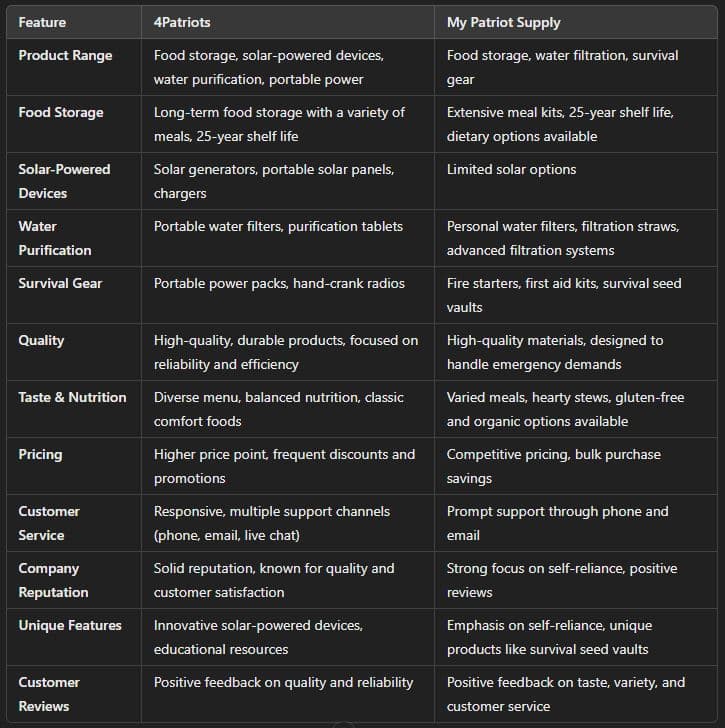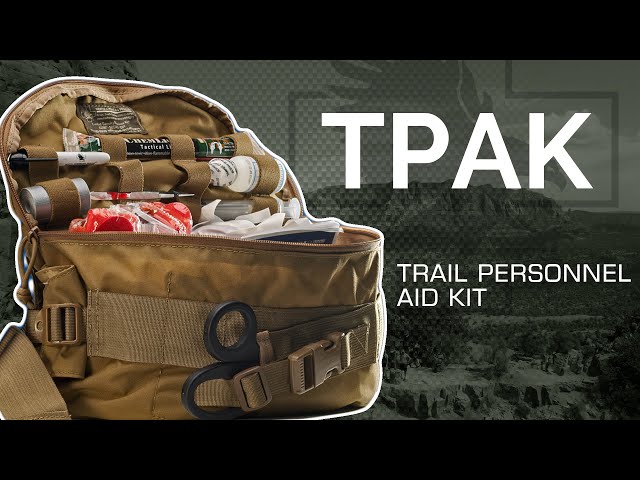Summer Safety First Aid Sale – Happening NOW #bethedifference #narpy
Mini Trail Personal Aid Kit (T-PAK) #bethedifference #beprepared #cattourniquet
Summer Safety First Aid Sale – Don’t Miss It! #bethedifference #beprepared #outdoors
Summer Safety First Aid Sale – Final Day #bethedifference #stopthebleed #personalprotection
I was in a coma for 3 weeks
Aeroponics vs Hydroponics vs Aquaponics: Soilless Farming
 Aeroponics vs Hydroponics vs Aquaponics
Aeroponics vs Hydroponics vs Aquaponics
The quest for more efficient, sustainable, and productive farming methods in modern agriculture has led to significant advancements in soilless cultivation techniques.
Aeroponics, hydroponics, and aquaponics stand at the forefront of this agricultural revolution, each offering unique benefits and challenges.
This article delves into the intricacies of these three innovative farming methods, comparing their processes, advantages, and suitability for different growers.
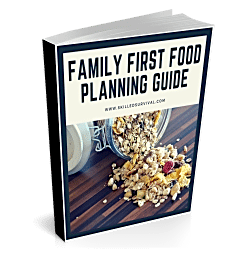
Want a free family-first food planning guide?
Click here to instantly download this Complete Checklist PDF. No purchase necessary.Understanding the Basics Of Aeroponics vs Hydroponics vs Aquaponics:
Aeroponics
Aeroponics is a method of growing plants in an air or mist environment without using soil or an aggregate medium.
Roots hang in the air and are periodically misted with a nutrient-rich solution.
This technique is known for its efficient use of water and nutrients and its ability to produce healthy, fast-growing plants.
Hydroponics
Hydroponics involves growing plants in a nutrient-rich water solution rather than soil.
This method allows for precise control over the nutrients that plants receive, often leading to faster growth rates and higher yields.
Various systems within hydroponics exist, including the nutrient film technique (NFT), deep water culture (DWC), and drip systems, each with its own set of benefits and requirements.
Aquaponics
Aquaponics combines hydroponics with aquaculture (raising fish) in a symbiotic environment.
In this system, fish waste supplies nutrients for the plants, while the plants help to filter and clean the water, which is then recirculated back to the fish tanks.
This creates a closed-loop system that mimics natural ecosystems and can produce both fish and vegetables.
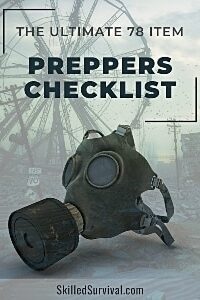
Want a free 78 item prepper checklist?
Click here to instantly download this Complete Checklist PDF. No purchase necessary.Key Components and Processes
Aeroponics
- System Design: Aeroponic systems typically consist of a frame or tower structure where plants are suspended with their roots exposed to the air.
- Nutrient Delivery: Roots are intermittently misted with a nutrient solution delivered through nozzles or sprayers.
- Environment Control: These systems require precise control of humidity, temperature, and nutrient concentrations to ensure optimal plant growth.
- Maintenance: Regular cleaning and monitoring of nozzles to prevent clogging is essential.
Hydroponics
- System Design: Hydroponic systems can vary widely, from simple setups with plants in containers to complex, automated systems with multiple levels and channels.
- Nutrient Delivery: Plants are placed in a nutrient solution or medium that retains moisture and nutrients. Common mediums include rock wool, clay pellets, and perlite.
- Water Management: Proper oxygenation and circulation of the nutrient solution are critical to prevent root rot and ensure plants receive adequate nutrients.
- Maintenance: Plant health requires monitoring pH levels, nutrient concentrations, and water quality regularly.
Aquaponics
- System Design: Aquaponic systems integrate fish tanks with hydroponic growing beds. The water from the fish tanks is pumped through the growing beds and back to the tanks.
- Nutrient Cycle: Fish waste provides a natural source of plant nutrients. Beneficial bacteria convert fish waste into nitrates, which plants can absorb.
- Water Management: Maintaining water quality for both fish and plants is crucial. This includes monitoring ammonia, nitrate, and pH levels.
- Maintenance: Key tasks include regularly feeding fish, checking water parameters, and ensuring the balance between fish and plant populations.
Aeroponics vs Hydroponics vs Aquaponics: Advantages and Disadvantages
↓ Hydroponics or Aeroponics?
Aeroponics
Advantages:
- Efficiency: Aeroponic systems use up to 90% less water than traditional soil-based methods and require fewer nutrients.
- Faster Growth: Plants can grow up to three times faster due to optimal nutrient uptake and oxygenation of roots.
- Space Utilization: Vertical aeroponic systems maximize space, making them ideal for urban farming and indoor setups.
Disadvantages:
- Complexity: Aeroponic systems require precise control and regular maintenance, which can be challenging for beginners.
- Cost: Initial setup costs can be high due to the need for specialized equipment and control systems.
- Vulnerability: Plants are highly dependent on continuous misting. Any failure in the system can lead to rapid plant stress and potential loss.
Hydroponics
Advantages:
- Control: Hydroponics offers precise control over nutrient delivery, leading to consistent, high-quality yields.
- Water Efficiency: These systems use significantly less water than traditional agriculture, as water is recirculated.
- No Soil Issues: Hydroponics eliminates soil-borne diseases and pests, reducing the need for pesticides.
Disadvantages:
- Dependency on Technology: Hydroponic systems rely on pumps, timers, and other equipment. Power outages or equipment failures can impact plant health.
- Initial Cost: Setting up a hydroponic system can be expensive, though high yields can offset costs over time.
- Monitoring: Monitoring water quality and nutrient levels is essential to prevent imbalances.
Aquaponics
Advantages:
- Sustainability: Aquaponics creates a closed-loop system that mimics natural ecosystems, making it highly sustainable.
- Dual Production: This method produces both plants and fish, offering a diverse range of food products.
- Natural Fertilization: Fish waste provides a continuous supply of plant nutrients, reducing the need for synthetic fertilizers.
Disadvantages:
- Complex Setup: Aquaponics systems are more complex to design and maintain, requiring knowledge of both hydroponics and aquaculture.
- Balancing Act: Maintaining the right balance between fish and plants is crucial for system stability and productivity.
- Initial Investment: The cost of setting up an aquaponics system can be high, though it can pay off with time and proper management.

Want a free 78 item prepper checklist?
Click here to instantly download this Complete Checklist PDF. No purchase necessary.Suitability for Different Growers
Aeroponics
Aeroponics is well-suited for advanced growers and those looking to maximize space in urban or indoor environments.
Its high efficiency and rapid growth rates make it ideal for commercial operations where space and resource optimization are critical.
However, the need for precise control and maintenance may deter beginners or those with limited technical expertise.
Hydroponics
Hydroponics offers a versatile solution for many growers, from hobbyists to commercial farmers.
Its ability to produce consistent, high-quality yields makes it appealing to those looking for a reliable and scalable growing method.
While hydroponics does require regular monitoring and maintenance, its various system options allow growers to choose setups that match their skill levels and resources.
Aquaponics
Aquaponics is best suited for growers interested in sustainable and integrated farming systems.
It appeals to those who value ecological balance and wish to produce plants and fish.
Due to its complexity, aquaponics is more appropriate for experienced growers or those willing to invest time in learning the nuances of managing both plant and fish populations.
Aquaponics can greatly benefit community projects, educational institutions, and commercial operations with a focus on sustainability.
Real-World Applications and Success Stories
Aeroponics
Aeroponics has applications in various fields, from urban farming to space exploration.
Vertical farms in urban areas use aeroponic systems to grow fresh produce year-round, contributing to local food security and reducing the carbon footprint associated with food transportation.
NASA has also explored aeroponics for growing crops in space, as the method’s efficiency and minimal resource requirements are ideal for extraterrestrial environments.
Hydroponics
Hydroponics is widely used in commercial greenhouses and indoor farms.
Companies like Gotham Greens and BrightFarms have established large-scale hydroponic farms that supply fresh produce to urban markets.
These systems allow for precise control over growing conditions, resulting in high-quality, pesticide-free vegetables that can be harvested year-round.
Hydroponics is also popular among hobbyists and home gardeners who want to grow their own food in limited spaces.
Aquaponics
Aquaponics has gained traction in sustainable farming communities and educational programs.
Projects like the Milwaukee-based Growing Power and the Global Aquaponics Initiative demonstrate aquaponics’ potential to provide fresh, local food while promoting environmental stewardship.
Schools and universities use aquaponics systems as educational tools to teach students about biology, ecology, and sustainable agriculture.
On a commercial scale, companies like Nelson and Pade, Inc. offer turnkey aquaponics systems and training for aspiring aquaponics farmers.
Future Trends and Innovations
Aeroponics
The future of aeroponics looks promising, given advancements in automation and artificial intelligence.
Automated systems that monitor and adjust environmental conditions in real-time can enhance the efficiency and reliability of aeroponic farming.
AI and machine learning integration can lead to predictive maintenance and optimized nutrient delivery, improving plant health and yields.
As urban populations grow, the demand for vertical farming solutions like aeroponics is expected to rise.
Hydroponics
Innovations in LED lighting, nutrient solutions, and system design will benefit hydroponics.
Energy-efficient LED lights tailored to specific plant needs can reduce operational costs and improve growth rates.
Enhanced nutrient formulations and delivery systems will give plants optimal nutrition, resulting in higher yields and better quality.
Developing modular and scalable hydroponic systems will make it easier for growers to expand their operations and adapt to changing market demands.
Aquaponics
Aquaponics is poised for growth as interest in sustainable and integrated farming systems increases.
Innovations in water filtration and recirculation technology can improve system efficiency and reduce maintenance requirements.
IoT devices for monitoring water quality and fish health will help farmers maintain balanced ecosystems.
As awareness of environmental issues and sustainable food production grows, aquaponics will likely gain more support from policymakers and investors.
Conclusion
Aeroponics vs hydroponics vs aquaponics each offer unique solutions to the challenges of modern agriculture.
By eliminating the need for soil and optimizing resource use, these soilless farming methods provide sustainable and efficient ways to produce fresh, high-quality food.
As technology and knowledge advance, these innovative farming techniques will play an increasingly important role in feeding the world’s growing population.
Whether you are an urban farmer, a commercial grower, or a sustainability enthusiast, exploring the potential of aeroponics, hydroponics, and aquaponics can open new possibilities for a greener, more productive future.
Why Trust Skilled Survival…
Go here now to review a full breakdown of:
- Who We Are
- Our Credentials
- Our Mission
- & Product Recommendations…
Here are a few highlights of our teams credentials & certifications:
- Certified Member of a Mountain Search & Rescue Organization
- Plant Emergency & Safety Leader for a Major Food Manufacturer
- Member of the 10TH Mountain Division Hut Association
- Certifications: Avalanche 1, WFR, CPR
- Official Gear Tester for Numerous Outdoor Gear Companies
- Countless Multiday Backpacking trips into Remote Wilderness
- Bachelor’s Degree In Mechanical Engineering
- Bachelor’s Degree In Civil Engineering
- Bachelor’s Degree In Biomedical Engineering
“It takes 20 years to build a reputation and five minutes to ruin it.” – Warren Buffett
We’re fully aware that trust is NOT something you GET but is EARNED.
And we’ll continue to earn YOUR trust through our forthright and honest approach with each new Blog Post, Guide & Product we create…
Prepare, Adapt & Overcome,

The post Aeroponics vs Hydroponics vs Aquaponics: Soilless Farming appeared first on Skilled Survival.
My Patriot Supply Vs 4Patriot: An Epic Preparedness Battle…
 My Patriot Supply Vs 4Patriots –
My Patriot Supply Vs 4Patriots –
In a world where uncertainty can strike at any moment, being prepared is more important than ever.
Two prominent names in the emergency preparedness industry, 4Patriots, and My Patriot Supply offer comprehensive solutions to ensure you’re ready for anything.
But which brand stands out as the better option for your needs?
This detailed comparison will delve into various aspects of both brands, from product offerings and quality to customer service and overall value.
Here is a comparison chart between 4Patriots and My Patriot Supply:
My Patriot Supply Vs 4Patriots: Product Offerings
4Patriots
4Patriots focuses on various survival and emergency preparedness products, including food storage, solar-powered devices, water purification systems, and portable power solutions.
Their product line is designed to cover the essential needs of individuals and families during emergencies.
- Food Storage: 4Patriots offers long-term food storage solutions with various meal options, including breakfast, lunch, dinner, and snacks.
Their meals are designed to be easy to prepare and have a long shelf life, typically up to 25 years.
- Solar-Powered Devices: From solar-powered generators to portable solar panels and chargers, 4Patriots provides eco-friendly power solutions that ensure you stay powered up even when the grid goes down.
- Water Purification: Water is a critical resource during emergencies, and 4Patriots offers water purification solutions such as portable water filters and purification tablets to ensure you have access to clean drinking water.
- Portable Power Solutions: Besides solar generators, 4Patriots provides portable power packs and hand-crank radios to keep you connected and informed during crises.
My Patriot Supply
My Patriot Supply offers a comprehensive selection of survival and emergency preparedness products, emphasizing food storage and self-reliance.
Their product range includes emergency food supplies, water filtration systems, and survival gear.
- Emergency Food Supplies: My Patriot Supply’s food storage options are extensive, with various meal kits designed to last from a few days to several months.
Their meals are easy to prepare, have a long shelf life, and cater to different dietary needs.
- Water Filtration: They offer a variety of water filtration products, including personal water filters, filtration straws, and larger filtration systems suitable for families or groups.
- Survival Gear: My Patriot Supply also provides an array of survival gear, including fire starters, first aid kits, and survival seed vaults for those interested in growing their own food.
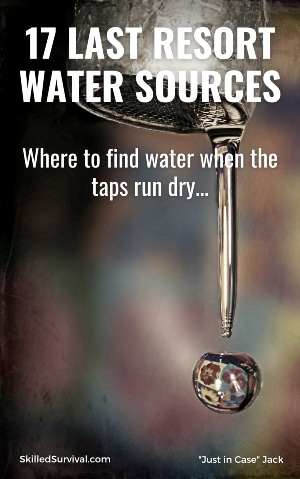
Want a free last resort water checklist?
Click here to instantly download this Complete Checklist. No purchase necessary.Quality and Shelf Life
4Patriots
4Patriots prides itself on offering high-quality, durable products that withstand harsh conditions.
Their food products are known for their taste and nutritional value, with a shelf life of up to 25 years, making them a reliable choice for long-term storage.
The solar-powered devices and portable power solutions are built to last, with a focus on reliability and efficiency.
My Patriot Supply
My Patriot Supply is also committed to high quality, particularly emergency food supplies.
Their meals are designed to be nutritious and flavorful, with a shelf life of up to 25 years.
The water filtration systems and survival gear are made from durable materials, ensuring they can handle the demands of emergencies.
My Patriot Supply Vs 4Patriots: Taste and Nutrition
4Patriots
The taste and nutrition of emergency food can be a deciding factor for many consumers.
4Patriots offers a variety of meals that are easy to prepare and designed to be tasty and nutritionally balanced.
Their meal options include classic comfort foods, soups, and breakfast items, ensuring a diverse menu during emergencies.
My Patriot Supply
My Patriot Supply strongly emphasizes the taste and nutritional value of its meals.
Their food products include various meal options, such as hearty stews, casseroles, and breakfast items.
They also offer gluten-free and organic options, catering to those with specific dietary needs.

Want a free family-first food planning guide?
Click here to instantly download this Complete Checklist PDF. No purchase necessary.Pricing and Value
4Patriots
4Patriots’ pricing reflects the quality and variety of their products.
While they might be on the higher end of the price spectrum, the value is evident in the durability and reliability of their offerings.
They frequently offer discounts and promotions, making their products more accessible to a wider audience.
My Patriot Supply
My Patriot Supply offers competitive pricing on its emergency preparedness products.
They provide various options at different prices, making it easier for consumers to find solutions that fit their budget.
Their larger meal kits and bulk purchase options often come with significant savings, providing good value for long-term preparedness.

Want a free 78 item prepper checklist?
Click here to instantly download this Complete Checklist PDF. No purchase necessary.Customer Service and Support
4Patriots
4Patriots is known for its responsive and helpful customer service.
They offer multiple channels for customer support, including phone, email, and live chat.
Their website features a comprehensive FAQ section and detailed product information, making it easy for customers to find the answers they need.
My Patriot Supply
My Patriot Supply also boasts excellent customer service.
They provide support through phone and email, focusing on resolving issues promptly and efficiently.
Their website includes product information and emergency preparedness tips, helping customers make informed decisions.
Company Reputation and Trustworthiness
4Patriots
4Patriots has built a solid reputation in the emergency preparedness industry.
They are known for their commitment to quality and customer satisfaction.
Their products are well-reviewed, and the company has a strong presence in the market, which speaks to their reliability and trustworthiness.
My Patriot Supply
My Patriot Supply is equally reputable, focusing on providing high-quality products and excellent customer service.
They have garnered positive reviews from customers and industry experts alike.
Their commitment to self-reliance and preparedness has earned them a loyal customer base.
Unique Features and Innovations
4Patriots
4Patriots stands out with its innovative approach to emergency preparedness.
Their solar-powered devices, such as the Patriot Power Generator, offer a sustainable way to ensure you have power during emergencies.
They also provide various educational resources, including survival guides and preparedness tips, to help customers stay informed and ready for any situation.
My Patriot Supply
My Patriot Supply differentiates itself with a strong emphasis on self-reliance.
Their survival seed vaults allow customers to grow their own food, promoting long-term sustainability.
They also offer unique products like the Alexapure Pro water filtration system, which provides advanced filtration technology for clean drinking water in any situation.
Customer Reviews and Feedback
4Patriots
Customer reviews for 4Patriots are generally positive, with many praising the quality and reliability of their products.
The solar-powered devices and emergency food supplies receive particularly high marks.
Some customers have noted that the higher price point is justified by their products’ quality and peace of mind.
My Patriot Supply
My Patriot Supply also enjoys positive customer feedback.
Their emergency food supplies are often highlighted for their taste and ease of preparation.
Customers appreciate the variety of products and the company’s commitment to customer service.
Like 4Patriots, some reviews mention that the pricing is fair considering the products’ quality and long shelf life.
Pros and Cons
4Patriots
Pros:
- High-quality, durable products
- Long shelf life for food supplies
- Innovative solar-powered devices
- Excellent customer service
Cons:
- Higher price point
- Limited dietary options compared to My Patriot Supply
My Patriot Supply
Pros:
- Wide range of products at various price points
- High-quality emergency food with dietary options
- Strong emphasis on self-reliance
- Excellent customer service
Cons:
- Some products may not be as innovative as 4Patriots’
- Bulkier food kits might be less portable

Want a free 78 item prepper checklist?
Click here to instantly download this Complete Checklist PDF. No purchase necessary.Final Verdict: My Patriot Supply Vs 4Patriots, Which Brand is Right for You?
Choosing between 4Patriots and My Patriot Supply depends on your needs and preferences.
Both brands offer high-quality, reliable products to help you stay prepared for emergencies.
If you prioritize innovative, eco-friendly solutions and are willing to pay a bit more for premium quality, 4Patriots might be the better choice.
Their solar-powered devices and educational resources provide added value, making them a strong contender for those looking to invest in comprehensive preparedness solutions.
My Patriot Supply could be the right fit if you’re looking for various products at competitive prices and value self-reliance.
Their extensive range of emergency food supplies, water filtration systems, survival gear, and options catering to specific dietary needs make them an excellent choice for budget-conscious consumers and those focused on long-term sustainability.
Ultimately, both 4Patriots and My Patriot Supply have proven themselves as leaders in the emergency preparedness industry.
By carefully considering your own needs and priorities, you can choose the brand that best aligns with your preparedness goals and ensures you and your loved ones are ready for whatever comes your way.
Why Trust Skilled Survival…
Go here now to review a full breakdown of:
- Who We Are
- Our Credentials
- Our Mission
- & Product Recommendations…
Here are a few highlights of our teams credentials & certifications:
- Certified Member of a Mountain Search & Rescue Organization
- Plant Emergency & Safety Leader for a Major Food Manufacturer
- Member of the 10TH Mountain Division Hut Association
- Certifications: Avalanche 1, WFR, CPR
- Official Gear Tester for Numerous Outdoor Gear Companies
- Countless Multiday Backpacking trips into Remote Wilderness
- Bachelor’s Degree In Mechanical Engineering
- Bachelor’s Degree In Civil Engineering
- Bachelor’s Degree In Biomedical Engineering
“It takes 20 years to build a reputation and five minutes to ruin it.” – Warren Buffett
We’re fully aware that trust is NOT something you GET but is EARNED.
And we’ll continue to earn YOUR trust through our forthright and honest approach with each new Blog Post, Guide & Product we create…
Prepare, Adapt & Overcome,

The post My Patriot Supply Vs 4Patriot: An Epic Preparedness Battle… appeared first on Skilled Survival.
Head-to-Head: Bluetti vs. EcoFlow – Best Power Station Revealed
In recent years, the demand for reliable portable power solutions has surged, driven by an increase in outdoor activities, off-grid living, and the need for emergency backup systems.
Among the prominent portable power station market players, Bluetti and EcoFlow stand out for their innovation and performance.
Today, we’re diving deep into the world of portable power stations, and boy, do we have a showdown for you.
We’re pitting two of the biggest names in the game against each other: Bluetti vs. EcoFlow.
Both brands bring serious power to the table, but which one’s gonna stand tall when the grid goes down or when you’re out in the wild?
Let’s get into it…
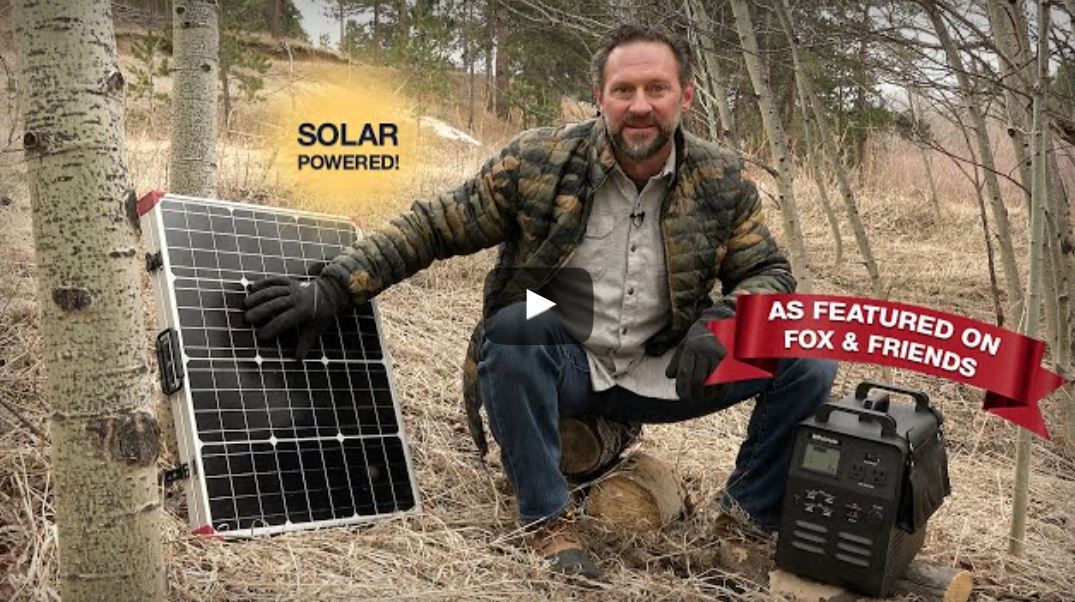
This Nearly Endless Energy Source Could Save Your Life →
This Solar Generator is “Worth Its Weight in Gold” — Safe to Use Inside & Never Needs Gas… Ever!Power Capacity: The Heavy Hitters
Bluetti
When it comes to raw power, Bluetti doesn’t mess around.
Their lineup boasts beefy models like the AC200P, packing a whopping 2000Wh.
Then there’s the EB150 with a solid 1500Wh.
These bad boys run on lithium iron phosphate (LiFePO4) batteries, which means they’re built for the long haul.
Whether you’re powering up your fridge during a blackout or running heavy-duty equipment at your off-grid cabin, Bluetti’s got you covered.
EcoFlow
EcoFlow isn’t backing down, either.
Their DELTA Pro is a beast with 3600Wh.
They also offer the RIVER series for those looking for something more compact, like the RIVER 600 Max with 576Wh.
EcoFlow uses lithium-ion NCM (Nickel Cobalt Manganese) batteries, giving you a higher energy density and a lighter load.
If you need power for intense applications, EcoFlow’s got the muscle.
Portability: On the Move
Bluetti
Now, let’s talk portability.
Bluetti’s got some weight to it.
The AC200P tips the scales at about 60.6 pounds.
It’s not exactly something you want to lug around on a whim, but if you’re setting up a stationary power hub, it’s perfect.
They do have smaller, more manageable options, like the EB70, which comes in at around 21.4 pounds—much easier on the back for those weekend camping trips.
EcoFlow
EcoFlow has been working on a balance between power and portability.
The DELTA 1300, for instance, weighs around 30.9 pounds, making it a more portable powerhouse than Bluetti’s larger models.
The RIVER 600 Max is even lighter, at 17 pounds, making it ideal for those who need a reliable yet portable power source.
Battery Technology and Lifespan: The Long Game
Bluetti
Bluetti’s rocking the LiFePO4 batteries, and here’s why that’s awesome.
These batteries are safe and stable, and they last a heck of a long time—over 2500 life cycles!
That means Bluetti’s power stations are a solid investment that’ll keep you powered up for years.
EcoFlow
EcoFlow uses lithium-ion NCM batteries.
While these don’t last as long as LiFePO4 (about 800 life cycles), they pack more energy into a lighter package.
So, you get efficient performance and less weight.
It’s a trade-off, but one that makes sense for quick, portable power.

This Nearly Endless Energy Source Could Save Your Life →
This Solar Generator is “Worth Its Weight in Gold” — Safe to Use Inside & Never Needs Gas… Ever!Versatility and Outputs: Plug It In
Bluetti
Bluetti is the Swiss Army knife of power stations.
The AC200P has AC outlets, USB-A and USB-C ports, a 12V car outlet, and wireless charging pads.
You can power up just about anything—from your laptop to your fridge.
With solid solar charging capabilities, Bluetti is ready for off-grid living.
EcoFlow
EcoFlow doesn’t skimp on versatility, either.
Its innovative X-Stream Technology allows for rapid recharging, and the DELTA series can handle heavy-duty devices with ease.
You get multiple AC outlets, USB ports, and DC carports.
The DELTA Pro even offers EV charging capabilities.
The RIVER series has a modular design, so you can expand capacity as needed.
EcoFlow’s got you covered, whatever your power needs.
User Interface and Control: Stay in Command
Bluetti
Bluetti’s power stations have intuitive touchscreens that make it easy to stay in control.
Real-time information on power input/output, battery status, and runtime is right at your fingertips.
Plus, they’ve got a mobile app for remote monitoring and control so that you can keep tabs on your power situation from anywhere.
EcoFlow
EcoFlow keeps things simple and smart.
Clear LED displays show all the critical info, and their mobile app lets you monitor battery status, adjust settings, and update firmware remotely.
This level of control helps you optimize power usage and stay prepared.
Charging Speed: Fast and Furious
Bluetti
Bluetti supports multiple charging methods—solar, AC, and car charging.
Their speeds are decent, but not the fastest.
For example, the AC200P fully recharges in about 4-5 hours with an AC outlet.
Not bad, but let’s see how EcoFlow stacks up.
EcoFlow
EcoFlow takes the cake here with their X-Stream Technology.
The DELTA 1300 can charge from 0% to 80% in under an hour and hits a full charge in about 1.6 hours with an AC outlet.
That’s blazing fast and a huge plus when you need power pronto.
Solar Charging: Harness the Sun
Bluetti
Bluetti’s solar charging game is strong.
Their power stations support a range of solar panels and can take in up to 700W with the AC200P.
This makes them an excellent choice for sustainable, off-grid energy solutions.
EcoFlow
EcoFlow has no slouch in the solar department either.
The DELTA series can handle up to 1200W of solar input (for the DELTA Pro), and their portable solar panels are easy to use and highly efficient.
EcoFlow combines fast charging with high solar input, making them a versatile choice for green energy enthusiasts.
Bluetti Vs EcoFlow Durability and Build Quality
Bluetti
Bluetti’s power stations are tough.
With LiFePO4 batteries, they’re built to handle rough conditions and last a long time.
Solid casing and robust design mean Bluetti units are ready for the long haul.
EcoFlow
EcoFlow also prioritizes durability.
Their units are rugged and reliable and made from high-quality materials.
While NCM batteries might not be as tough as LiFePO4 in extreme conditions, EcoFlow’s build quality is top-notch, ensuring your power station can withstand frequent use and transport.
Price and Value: Bang for Your Buck
Bluetti
Bluetti offers excellent value, especially for those looking for long-term reliability.
The AC200P, with its high capacity and durable LiFePO4 battery, is a fantastic investment at a competitive price.
Bluetti’s focus on longevity and versatility makes them a smart choice for budget-conscious buyers.
EcoFlow
EcoFlow tends to be pricier, but you’re paying for advanced technology and rapid charging capabilities.
With its impressive features and quick turnaround, the DELTA series justifies the higher price for those who need efficient and reliable power.
If you value speed and cutting-edge tech, EcoFlow is worth the investment.
Customer Support and Warranty: Peace of Mind
Bluetti
Bluetti backs its products with solid customer support and a reliable 2-year warranty, with options to extend.
Customers generally report positive experiences with responsive support and effective issue resolution.
EcoFlow
EcoFlow offers comprehensive customer support and a similar 2-year warranty, with extended options available.
Their robust support system and user reviews often highlight prompt and helpful service, ensuring you’re covered if something goes wrong.

This Nearly Endless Energy Source Could Save Your Life →
This Solar Generator is “Worth Its Weight in Gold” — Safe to Use Inside & Never Needs Gas… Ever!Conclusion: Which One’s Right for You?
So, which power station should you choose?
It depends on what you need.
Bluetti is your go-to if you’re looking for battery longevity, stability, and great value.
With LiFePO4 batteries, versatile outputs, and solid solar charging, Bluetti is perfect for off-grid living and long-term use.
EcoFlow shines with rapid charging, portability, and cutting-edge tech.
Their fast charging speeds, lightweight design, and smart features make them ideal for those who need quick, reliable power on the go.
Both brands deliver high-quality power solutions that can handle a range of scenarios, from outdoor adventures to emergency backups.
Evaluate your priorities and choose the one that best fits your needs.
Stay powered up, stay prepared, and, as always, keep surviving.
There you have it, folks Bluetti Vs Ecoflow.
I hope this helps you make an informed decision.
Why Trust Skilled Survival…
Go here now to review a full breakdown of:
- Who We Are
- Our Credentials
- Our Mission
- & Product Recommendations…
Here are a few highlights of our teams credentials & certifications:
- Certified Member of a Mountain Search & Rescue Organization
- Plant Emergency & Safety Leader for a Major Food Manufacturer
- Member of the 10TH Mountain Division Hut Association
- Certifications: Avalanche 1, WFR, CPR
- Official Gear Tester for Numerous Outdoor Gear Companies
- Countless Multiday Backpacking trips into Remote Wilderness
- Bachelor’s Degree In Mechanical Engineering
- Bachelor’s Degree In Civil Engineering
- Bachelor’s Degree In Biomedical Engineering
“It takes 20 years to build a reputation and five minutes to ruin it.” – Warren Buffett
We’re fully aware that trust is NOT something you GET but is EARNED.
And we’ll continue to earn YOUR trust through our forthright and honest approach with each new Blog Post, Guide & Product we create…
Prepare, Adapt & Overcome,

The post Head-to-Head: Bluetti vs. EcoFlow – Best Power Station Revealed appeared first on Skilled Survival.


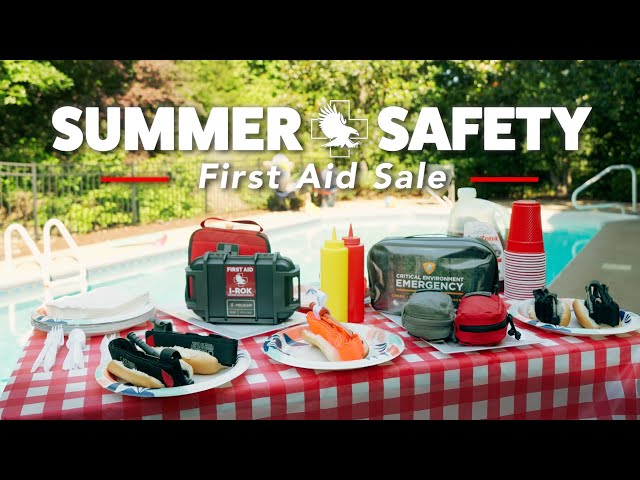
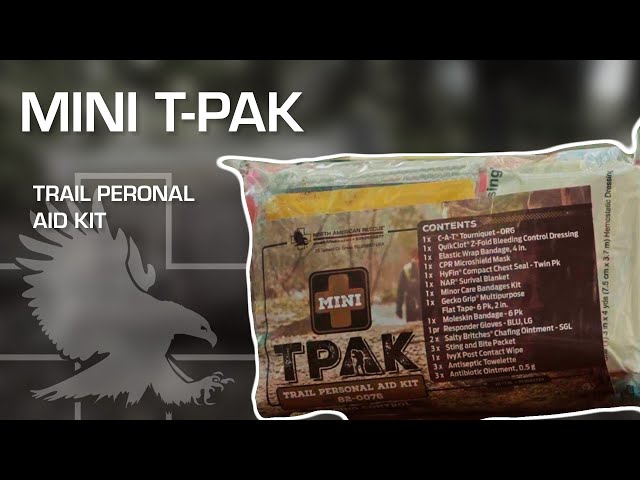
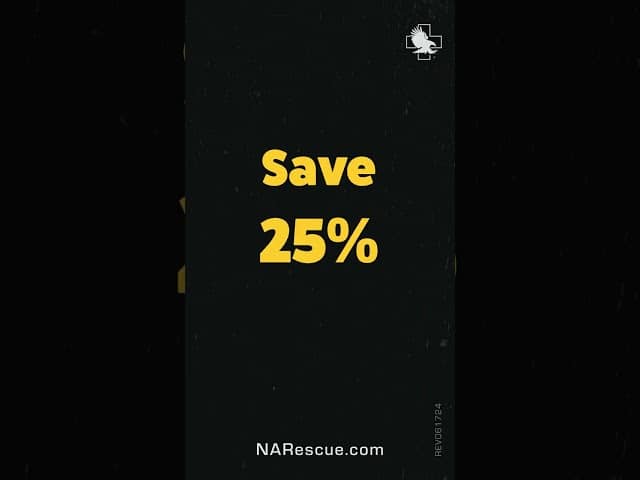
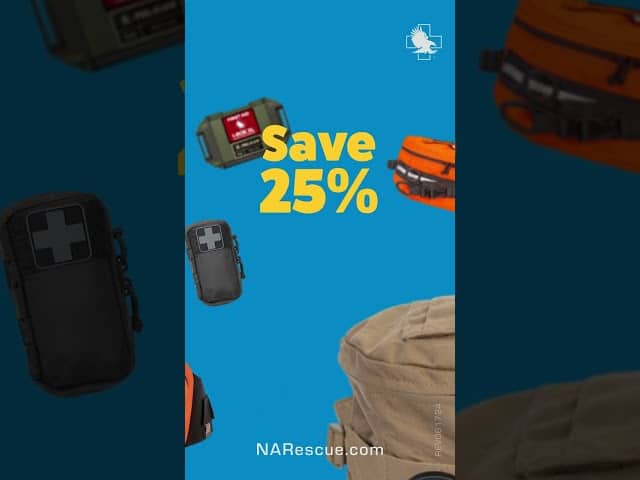


 Aeroponics vs Hydroponics vs Aquaponics
Aeroponics vs Hydroponics vs Aquaponics



 My Patriot Supply Vs 4Patriots –
My Patriot Supply Vs 4Patriots –